Is the Sun on Fire?
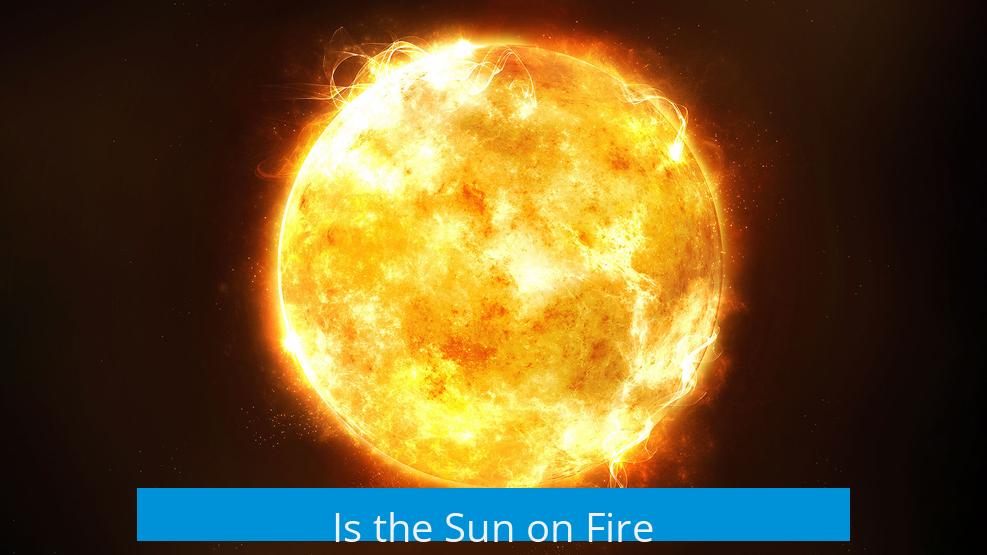
The sun is not on fire in the traditional chemical sense. Its energy does not come from combustion, but rather from nuclear fusion where hydrogen atoms combine to form helium, releasing immense energy. This process differs fundamentally from fire as a chemical reaction involving oxidation.
What Defines Fire?
Fire is a chemical process. It results from an oxidation reaction where a fuel reacts with oxygen (usually O2), producing heat, light, and new chemical compounds. The key elements of fire include:
- Fuel source (like wood or gas)
- Oxygen as an oxidant
- Heat that sustains the reaction
- Production of hot gases and light through chemical bonds breaking and forming
Fire involves chemistry: atoms exchange or share electrons, forming new compounds. It is a surface or gas-phase reaction involving molecules.
What Powers the Sun?
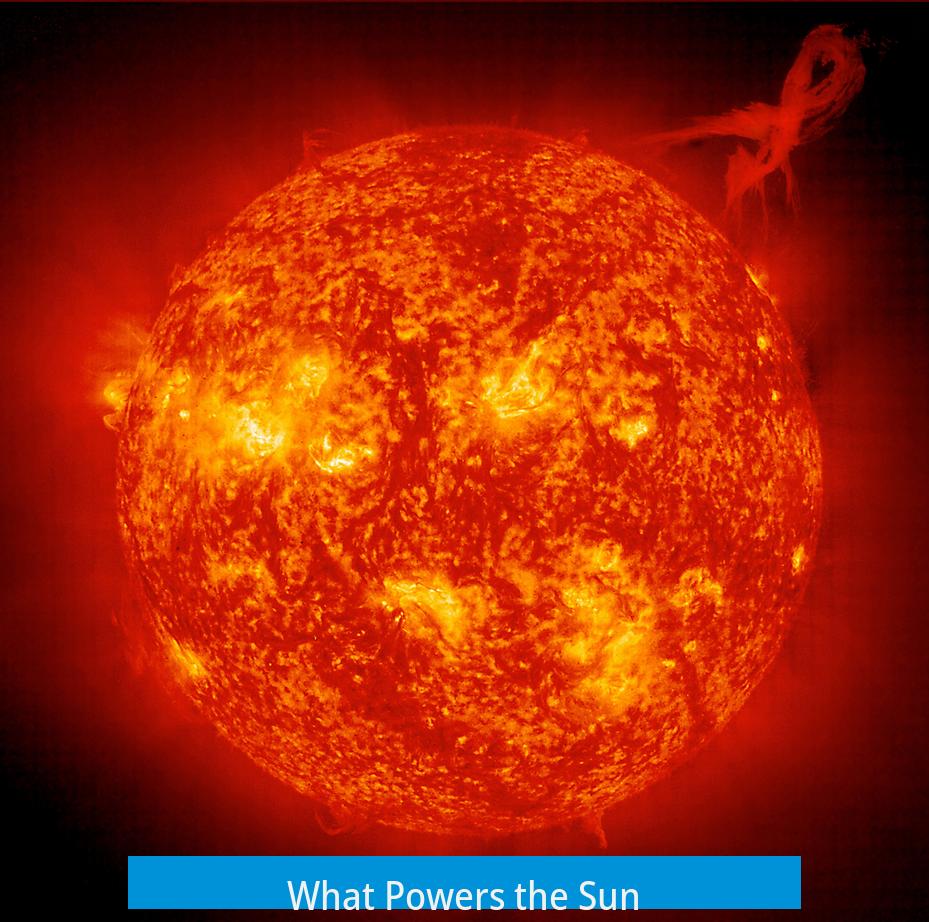
The sun generates energy by nuclear fusion. In its core, the immense pressure and temperature (millions of degrees) cause hydrogen nuclei (protons) to fuse into helium nuclei. This reaction:
- Fuses two hydrogen atoms into one helium atom
- Releases a tremendous amount of energy as mass converts to energy (E=mc2)
- Produces light and heat that radiate outward
This fusion is a nuclear physics process, not a chemical one. Unlike fire, there is no oxygen or chemical bonding of electrons involved.
Why Isn’t the Sun “On Fire”?
Because the sun’s energy does not result from oxidizing fuel, it does not meet the technical definition of fire. Key distinctions are:
- No combustion: no oxygen reacts with fuel molecules
- Energy arises from nuclear fusion, not chemical reactions
- The sun is a plasma — an extremely hot, ionized gas — emitting light due to nuclear heating, not burning
While the sun glows like fire and produces heat and light, its processes are governed by nuclear forces and physics, not chemistry.
Common Questions About the Sun and Fire
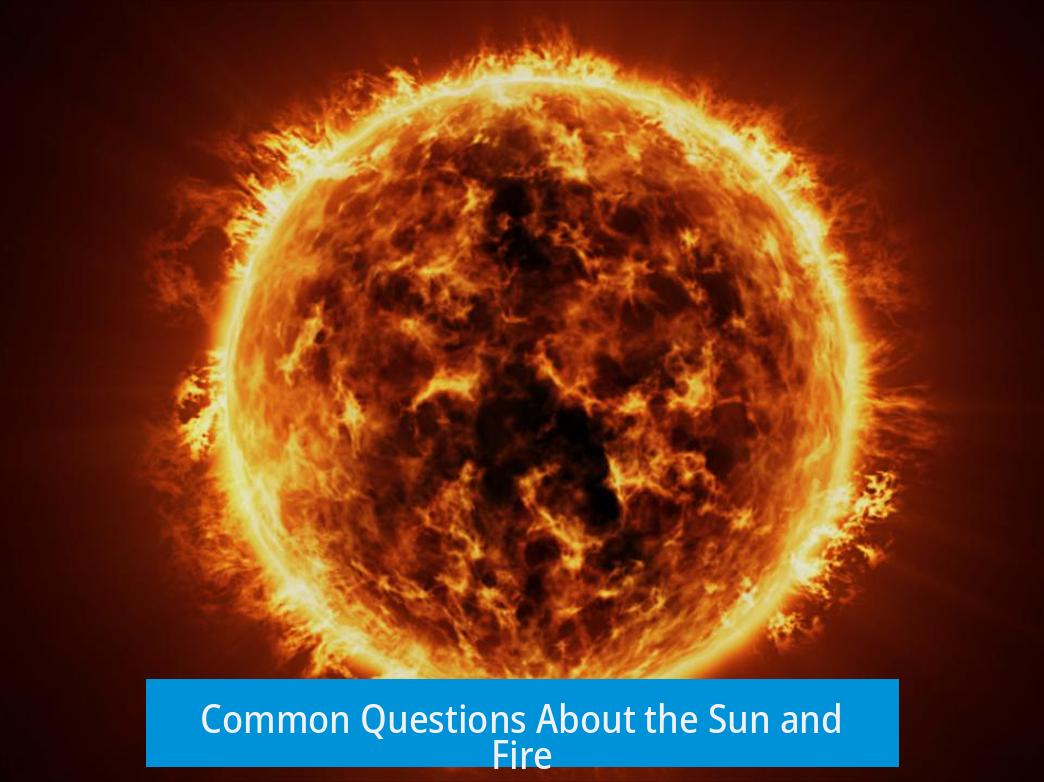
| Question | Answer |
|---|---|
| Is the sun similar to regular fire? | In appearance, it emits light and heat like fire but operates via nuclear fusion, not oxidation. |
| Could water extinguish the sun’s “flames”? | Adding water would not extinguish fusion; it might add hydrogen, potentially fueling the nuclear reactions. |
| Does oxidation occur on the sun? | Minor oxidation processes may happen, evidenced by water production, but these are not the main energy sources. |
Additional Insights on Solar Radiation
A photon of light produced by fusion in the sun’s core takes about a million years to reach the sun’s surface due to interactions with solar material. Once escaping, sunlight travels eight minutes to Earth.
This complexity shows solar physics is unlike conventional fire or terrestrial energy sources.
Key Takeaways
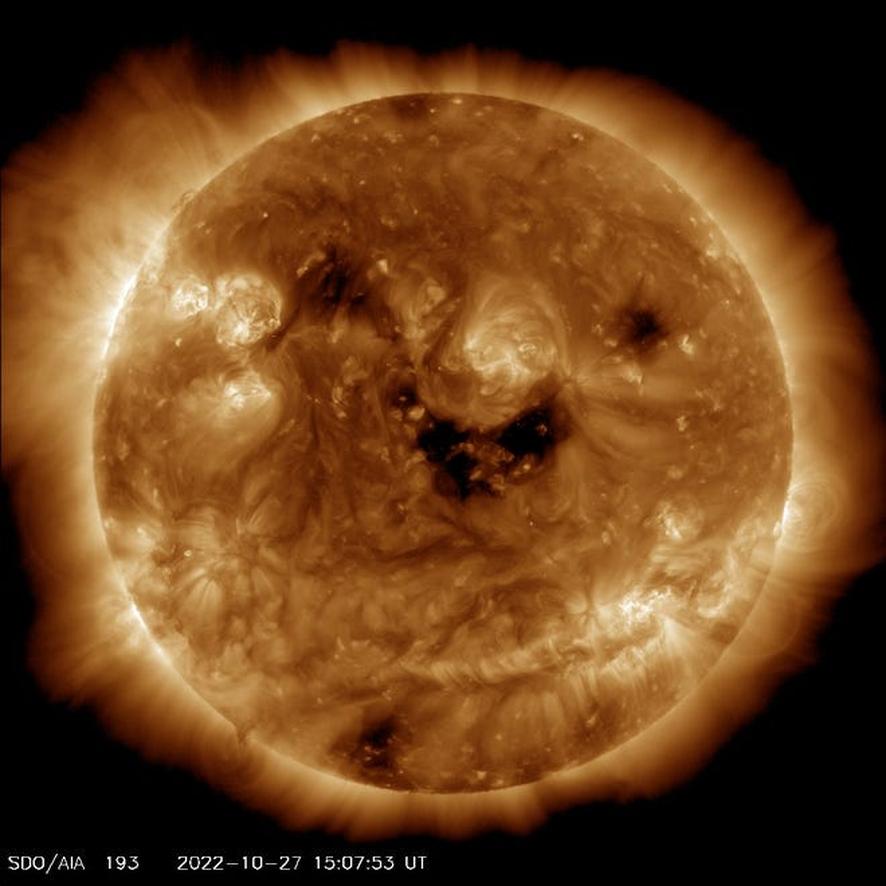
- Fire is a chemical oxidation process involving fuel and oxygen.
- The sun’s energy comes from nuclear fusion, not chemical combustion.
- Hydrogen nuclei fuse to form helium, releasing vast energy in the sun’s core.
- The sun is a plasma radiating light due to nuclear reactions, not burning fuel.
- Adding water to the sun cannot extinguish fusion; water could add fuel to reactions.
- Photons produced deep inside the sun take millennia to escape its interior.
Is the Sun On Fire? Let’s Clear Up This Cosmic Confusion
Is the Sun on fire? No, it’s not. But before you toss out every campfire story you know, let’s unravel this stellar mystery carefully. It’s a question that blends science and everyday language in a confusing cosmic stew. So, what exactly defines fire? And why does the Sun dance to a different nuclear tune?
What Is Fire, Really?
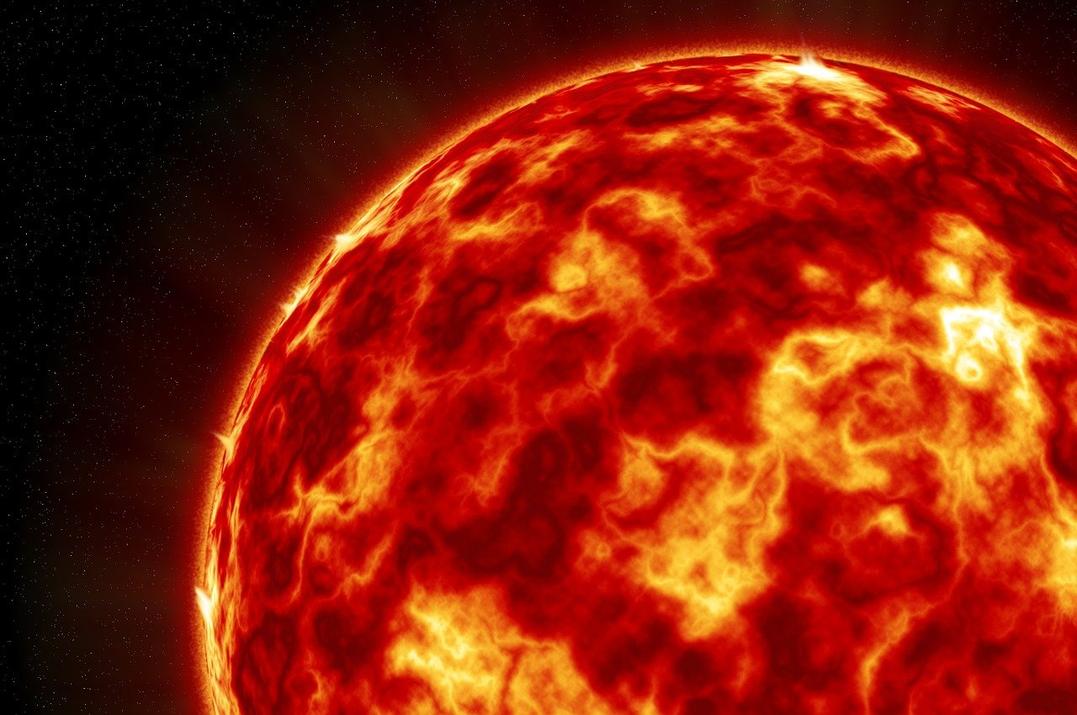
We usually think of fire as those warm, crackling flames from a campfire. Scientifically, fire is a chemical reaction. It happens when a fuel meets an oxidant—most commonly oxygen—and they combine with a bit of heat to spark off a glow. This process, called oxidation, rearranges electrons between atoms, creating new compounds and releasing light and heat.
In simple terms, fire means two or more atoms joining forces through chemical bonds, making something hot, bright, and fiery. Think of a log burning: the wood (fuel) reacts with oxygen from the air. That’s real fire.
Why the Sun Isn’t Fire (And What It Actually Is)
The Sun, though, is not “on fire” in this way. It is a massive ball of plasma, glowing fiercely, but the forces powering it are not chemical at all—they are nuclear.
Inside the Sun, the energy comes from nuclear fusion, not oxidation. Imagine squeezing hydrogen atoms so tightly and with such intense heat that they fuse together, forming helium atoms. This fusion process releases enormous energy while reshaping atoms.
So, while fire depends on electrons swapping places and bonds forming chemically, fusion literally changes the nuclei of the atoms. Two hydrogen atoms become one helium atom, and a colossal blast of energy follows.
The Sun’s Energy Source: A Giant Nuclear Blast on a Loop
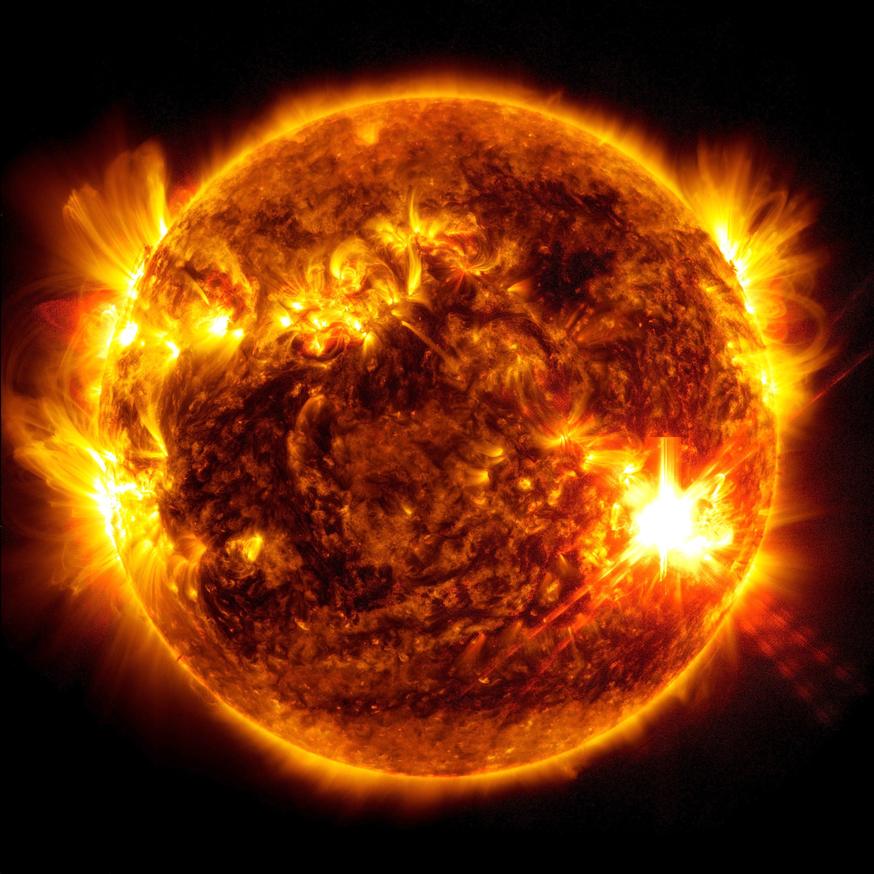
The Sun behaves like a calm but continuous nuclear explosion. Each second, hydrogen atoms collide and fuse, releasing energy that keeps the Sun luminously alive. But instead of blowing itself apart, the Sun’s gravity holds all that energy in balance, pressing back against the nuclear blast.
If the Sun ever stops fusing hydrogen, gravity would win out, causing it to collapse or explode. So, you might say it’s a glowing, never-ending nuclear furnace—not a flaming bonfire.
Does the Sun Have Any “Fire-Like” Traits?
Some people ask: “Could we call the Sun ‘fire’ anyway, just a different kind?” Sort of, but only loosely. Unlike earthly fire fueled by oxygen, the Sun’s ‘fuel’ is hydrogen fusion. No oxygen is involved, no chemical bonds as in a flame, no smoke, and no chemical combustion.
Even throwing water on the Sun—imagine a heroic firefighter’s desperate attempt—wouldn’t douse this “fire.” Instead, adding hydrogen atoms (what water breaks down into) might just feed the fusion process, not stop it.
Beyond the Flames: Cool (or Hot!) Facts About Solar Light
Here’s a wild nugget: photons generated deep inside the Sun can take up to a million years wandering through the dense solar core before they finally escape into space.
And when they do, it’s an eight-minute fast leap to Earth, which means sunlight we see right now began its journey long, long ago. This journey defies human experience—making the Sun’s glow even more mysterious.
Wait, There’s Water on the Sun?
In a surprising twist, recent studies show water molecules do exist briefly in the Sun’s upper atmosphere! But don’t mistake this for flames—we’re talking a tiny trace far from the brilliant fusion core.
This water leads to some oxidation reactions, but those have virtually no bearing on the Sun’s heat or glow. The main show remains nuclear fusion.
What Does This All Mean for Us Star-Gazers?
Understanding the Sun’s true nature helps clear up misconceptions. It’s not fire. It’s far stranger and grander—a nuclear reactor held by gravity, shining through plasma and time. Calling the Sun “on fire” is like calling a Tesla a “gasoline car” just because it drives fast.
For backyard astronomers and curious minds, knowing this difference adds a layer of awe. The Sun is a raging physics experiment offering free energy and light with no need for kindling or matches.
Next time you bask in sunlight, remember you’re warm thanks to billions of years-old hydrogen atoms smashing together, not because the Sun is “burning.” It’s a subtle but mighty reminder of the universe’s complex elegance.
Final Thought
So, Is the Sun on fire? Nope. It’s a nuclear fusion powerhouse—a glowing star living off atomic teamwork. While it looks like fire with its brilliant light and heat, it plays by cosmic physics rules that make our everyday flames look like a backyard party in comparison.
Isn’t it fascinating that sometimes, the truth is way cooler (or hotter) than fiction?
Is the sun on fire like a campfire?
No. The sun’s energy comes from nuclear fusion, not from burning fuel with oxygen like a fire. Fusion merges hydrogen atoms into helium, releasing energy without oxidation.
Why doesn’t the sun need oxygen to produce light?
Fire requires oxygen for a chemical reaction. The sun emits light due to nuclear fusion, which is a physical process under extreme pressure and heat, unrelated to oxygen.
Could water put out the sun’s flames?
No. Since the sun’s energy is nuclear, adding water wouldn’t extinguish it. Water could actually add fuel for fusion, not stop the sun’s energy production.
Is the sun’s surface really “on fire”?
The sun’s surface is plasma heated by fusion reactions inside. It glows due to intense heat, not because of a chemical fire burning its surface gases.
Does oxidation or burning happen on the sun at all?
Some oxidation occurs due to trace water presence, but this is minor. The main source of energy is nuclear fusion, not chemical combustion.


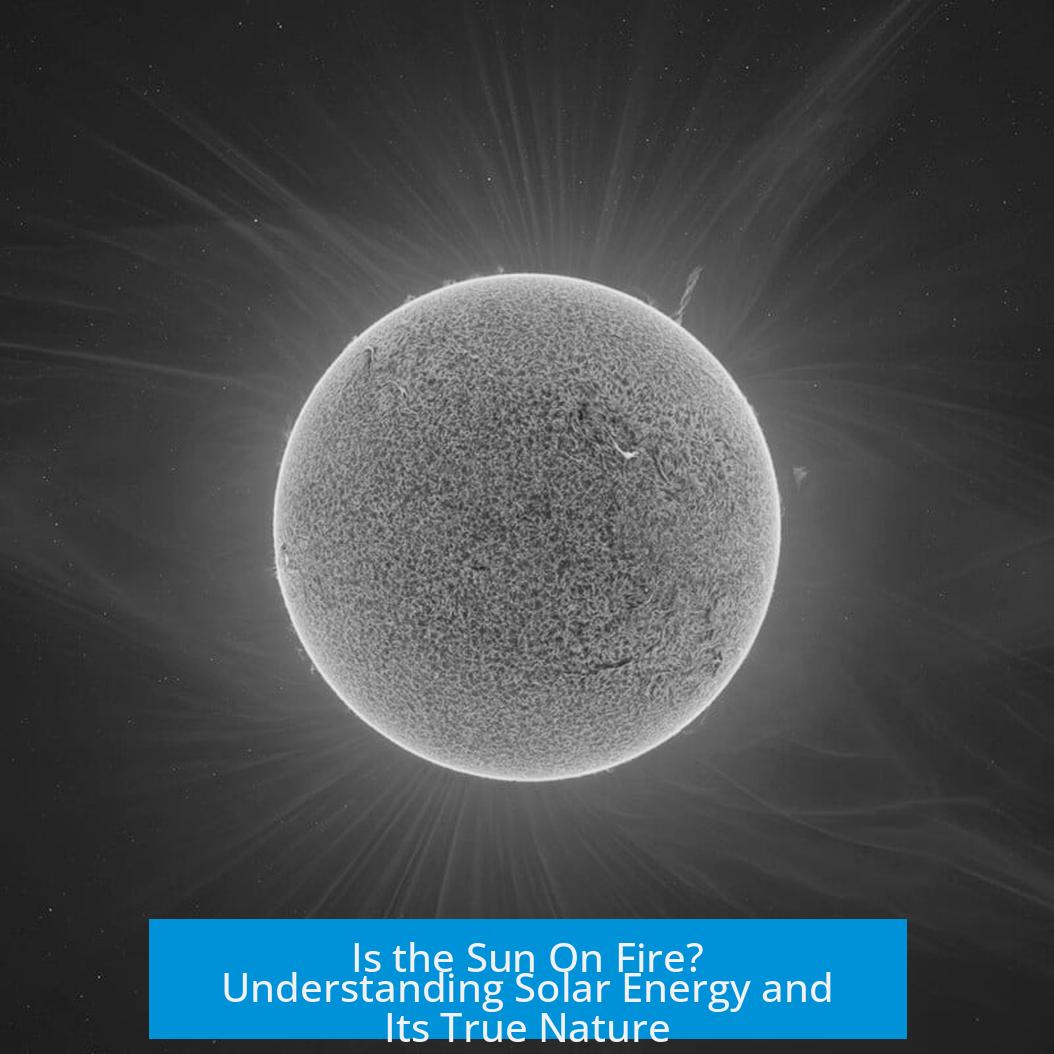

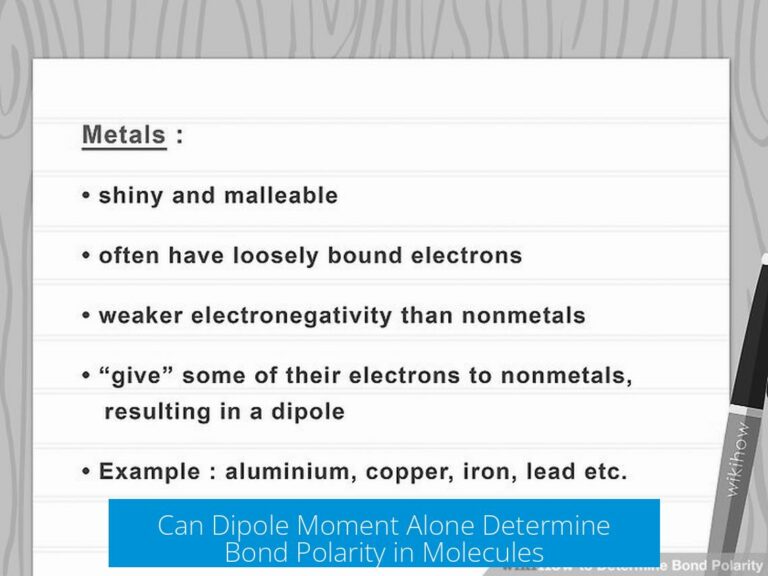
Leave a Comment